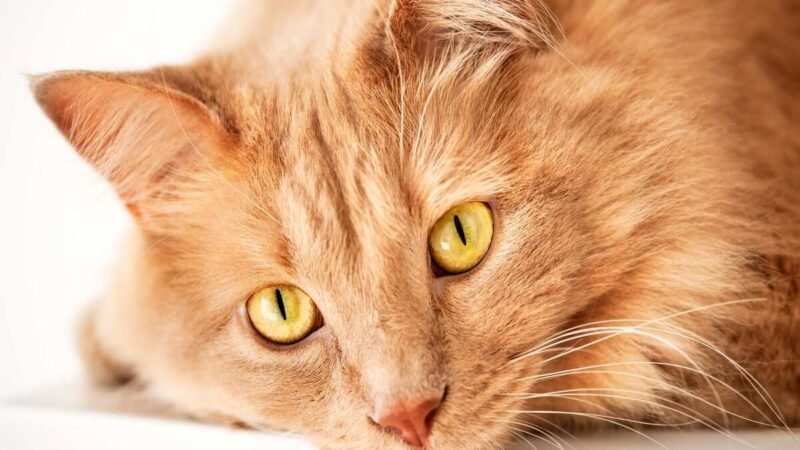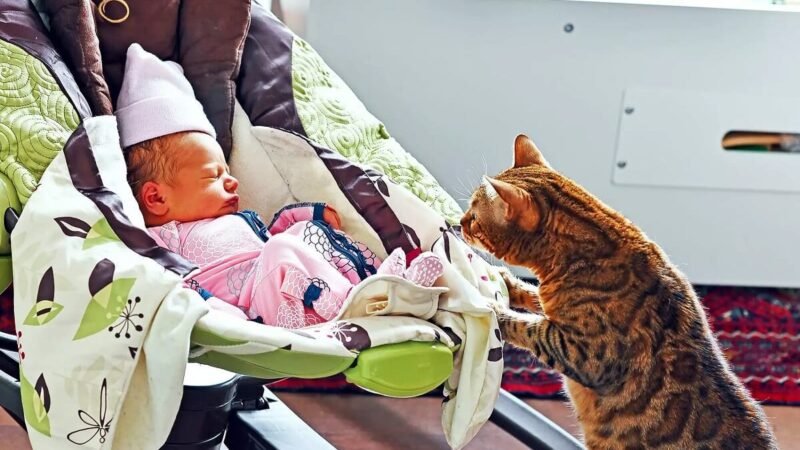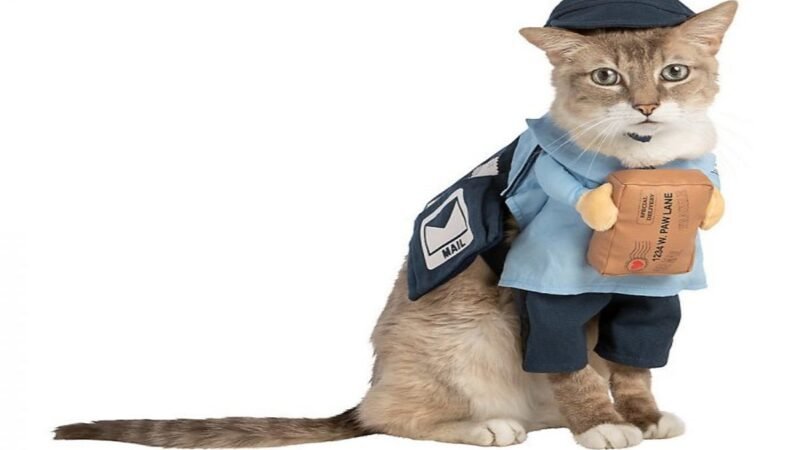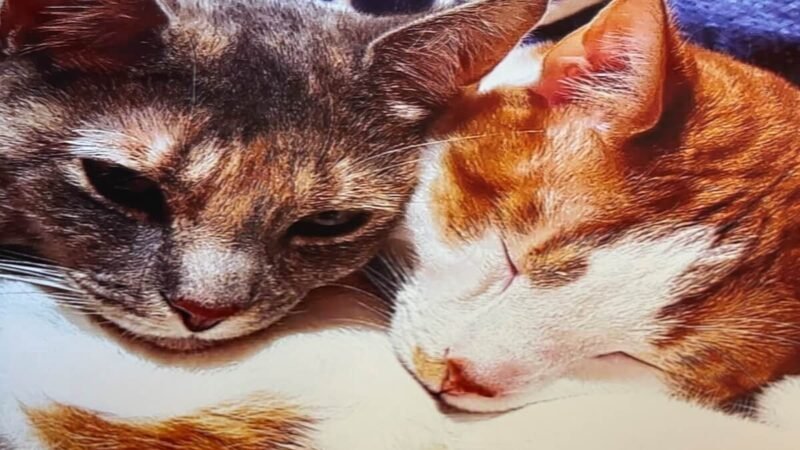Why is My Cat’s Nose Wet?

Cats’ noses are usually wet and cool, which helps them pick up scents and determine the source – just like dogs. Scent particles stick to wet surfaces more easily, which is why it’s an evolutionary advantage to have a wet nose.
Cats have a scent gland above the roof of their mouths, the Jacobson’s organ. This organ helps them detect odors when they breathe through their mouths. Sometimes, they’ll open their mouths a little to take in the scent better, known as the flehmen response. If you’ve ever seen your cat look completely offended by a smell, you’re seeing this ability at work.
Read More: Will My Cat Come Back If I Let Him Outside?
Table of Contents
Why a Cat’s Nose May Be Dry or Warm?
It’s normal for a cat that has just woken up to have a dry nose. This is simply because the cat was not licking his nose in his sleep. In addition, a cat’s nose may be warm or dry if the cat was lying in the sun, near a heat source, or next to a fan or an air vent.
If you have a generally healthy cat with why is my cat’s nose wet, there is probably nothing to worry about. Check to make sure the nose is not flaky, crusty, raw, swollen, or oozing. If the skin on the nose looks normal and your cat is acting like himself, then everything should be fine
Sometimes, a dry or warm nose will be seen along with other signs of illness, such as vomiting, diarrhea, lethargy, fever, decreased appetite, or others. Be sure to contact your vet if you notice any abnormal signs, regardless of how your cat’s nose feels.
Why a Cat’s Nose May Be Dry or Warm?
Your cat’s nose may be abnormal if you notice flakiness, crusting, swelling, redness, discharge, bleeding, or abnormal growths. Be sure to contact your veterinarian if you notice any nasal problems with your cat. There are several potential medical reasons for a cat’s nose to become unhealthy.
- Respiratory Illness
- Dehydration
- Skin Problems
- Sun Damage
- Trauma
- Cancer
Cat’s Noses are Typically Wet for Picking up Scents
Cats’ noses are typically wet, and they may even feel cool. The wetness of a cat’s nose helps him pick up scents and determine where smells are coming from. This works similarly with dogs. Scent particles stick to wet surfaces more easily than dry ones, giving wet noses a distinct advantage.
Like dogs, cats have a scent gland above the roof of their mouths called the Jacobson’s Organ. This allows them to detect odors by breathing through their mouths, and sometimes they hold their mouths open in a bit of a “sneer” to get a good whiff of scent in their mouths. This is called the flehmen response.
Some people think cats may also lick their noses for a similar reason that dogs do: to get more scent particles to the Jacobson’s Organ. But others think cats lick their noses to reset and remove residue that may interfere with their ability to pick up scents.
Read More: Is Sheba Good for Cats?
A wet cat Nose vs. a dry Cat Nose
A dry cat nose is just as common as a wet cat nose, and is usually no cause for alarm. If a cat spends a large chunk of time in direct sunlight, a dry nose might result. This happens to us humans while sunbathing our skin as well! A dry cat nose can also pop up if a cat spends a lot of time near a non-solar heat source like a fireplace or a heating vent.
Facts about Cat Noses
- Cats have around 200 million scent receptors, which is more than some dogs! They use their keen sense of smell to help them find and track their prey, figure out if something is safe to eat, and detect other cats in the area who have marked their territory or may be in heat. Here are some other fun cat nose facts:
- Every cat nose has a unique pattern of bumps and ridges. Like fingerprints and snowflakes, no two cat noses are alike.
- Cats don’t have many taste receptors, so their sense of smell plays a big part in stimulating their appetite. This is why many cats lose their appetite when they have a stuffy nose.
- With such a keen sense of smell, some cats can be overwhelmed by scents, such as scented litter, air fresheners, or laundry products. If this is an issue for your cat, stick to brands without fragrances.
- When cats lick their noses, they may be resetting their sense of smell by cleaning off those trapped scent particles. Licking their nose can also be a sign that your cat is feeling anxious.
- Cats like to greet each other with a mutual sniffing that can go from nose to tail. This is why cats will come over and sniff at your finger when you hold it out for them. It’s like a substitute nose.
- Cats with orange coloring, like calicos or tortoiseshell cats, are prone to getting freckles on their noses. These freckles are caused by a condition known as lentigo. But don’t worry—these freckles won’t multiply with sun exposure or become cancerous.
- A cat’s nose has lots of small blood vessels that can grow or shrink due to changes in their emotional state. For instance, your cat’s nose may get brighter and more vibrant when they’re excited.
What if My Cat is Sick?
Contrary to popular belief, your cat’s nose moisture and temperature aren’t reliable indicators of whether it’s sick. Instead, you should pay attention to actions and behaviors, such as inappetence, lethargy, increased thirst, digestive upset, or increased vocalization.
That said, if your cat’s nose is suddenly drier and warmer than normal and stays that way, combined with other symptoms, it could indicate a fever or dehydration. Cats are notorious for having drinking problems, so it’s important to pay attention to signs of dehydration.
Conversely, an overly wet nose can also spell trouble. If your cat’s nose is wetter than normal, it could be because of discharge that indicates a respiratory infection, allergies, or other health conditions. This may be accompanied by wheezing or congestion. If you notice any of these symptoms, call your veterinarian for an exam.
Read More: What Happens if Cats are Left in a Dark House?
A Wet Nose Keeps the Body Temperature in Check
As humans, sweat pours out of our bodies on hot days to cool our bodies down. Unlike us, cats cannot sweat all over their bodies as they only have sweat glands in their paws that provide cooling.
When cats get hot and start feeling overheated, they use their wet hairless noses to create evaporation to help regulate their body temperature.
Is a Cat’s Nose supposed to be Wet or Dry?
This notion that the nose of a cat or dog always should be wet is a bit overblown. Yes, the average cat or dog has a moist nose, but this is not an important indicator of a pet’s general health by any stretch of the imagination. I’ve seen many perfectly healthy cats that just happen to have a dry nose.
You would think that a cat suffering from dehydration would have a dry nose and that a dry nose would be an important sign to look out for. However, I’ve treated cats with severe dehydration whose noses were as moist as can be.
So don’t worry about the moistness of your cat’s nose. If, however, your cat’s nose has experienced a sudden change in the degree of wetness, and is accompanied by other clinical signs (decreased appetite, excessive thirst or urination, coughing, sneezing, vomiting, diarrhea, weight loss, etc.), I would have the cat evaluated by a veterinarian.
When to Take Your Cat to the Vet
Just because your cat’s nose is running doesn’t necessarily mean you need to dash off to the vet. In most cases, a runny nose is part of the normal nasal clearing process and/or the result of an infection that will clear up on its own.
The most common signs in cats with runny noses include sneezing, nasal discharge, red and runny eyes, coughing, oral or nasal ulcers, sniffles, fever and hoarseness. These common signs tend to accompany upper respiratory tract infections and often warrant a trip to the vet to ensure you can get your cat back to healthy.
More problematic signs you should be on the lookout for include severe eye swelling, bloody or greenish discharge, extreme lethargy, a high fever, poor appetite and difficulty breathing. Cats with these signs may just have a nasty cold, but they’re also more likely to have bronchopneumonia or even cancer. Take your cat to their vet right away if you notice any of these signs. Early treatment can make a big difference.
Read More: What do cats like to eat for breakfast?
Conclusion
Your feline companion relies on that cute nose of his to explore his environment and provide him with an acute sense of smell. It’s normal for a cat to have wet noses because the moisture helps regulate body temperature and fine-tunes their sense of smell. The next time your kitty cat snuggles up to you, take a good look at that cute little nose to appreciate how important it is!
Frequently Asked Questions (FAQs) about Why is My Cat’s Nose Wet?
Is a Cat’s Nose Supposed to be Cold and Wet?
A cat’s nose should be clean. Depending on their activity level and the temperature of their surroundings, their nose may be cold or warm. If your cat paws at their nose or sneezes frequently, or if you see mucous or other discharge, contact your veterinarian.
What if My Cat’s Nose is Dry?
While cats’ noses should be wet and cool, a dry and warm nose doesn’t necessarily mean there’s a problem. If your cat recently groomed its nose, it could feel dry. Your cat’s nose may also be dry and warm if it was sunbathing outside or in a window.
Read More: What Happens if Cats are Left in a Dark House?
What does it Mean When a Cat has a Cold Wet Nose?
A cold, wet nose is just one sign of wellness in cats and dogs and should not be considered in isolation as an indication of overall health. On occasion, you will find a healthy pet with a warm dry nose. Perhaps they don’t lick their nose as often or secrete as much mucous.





